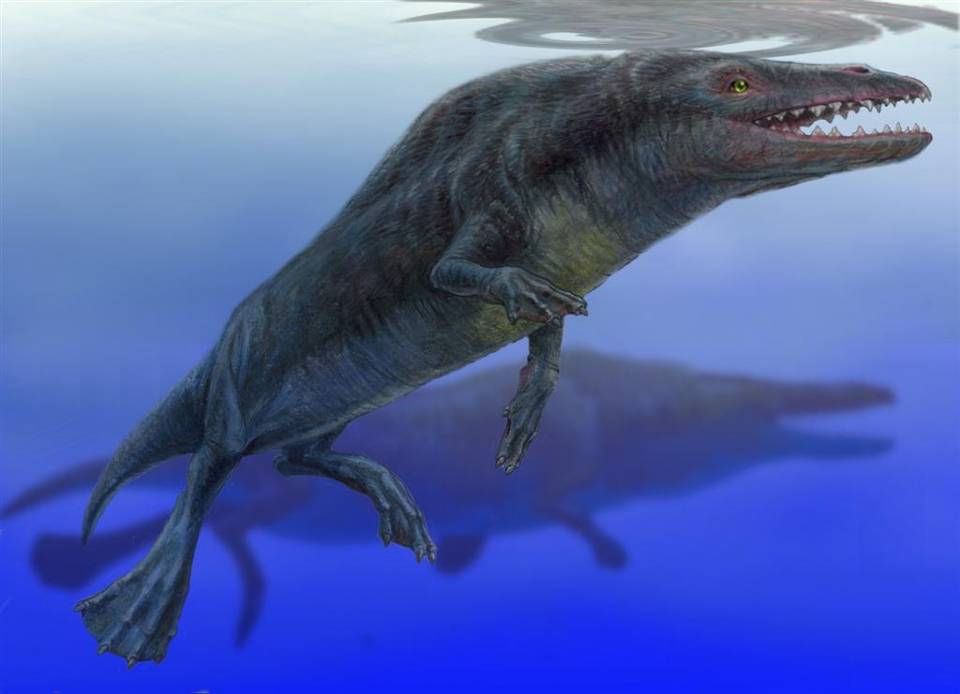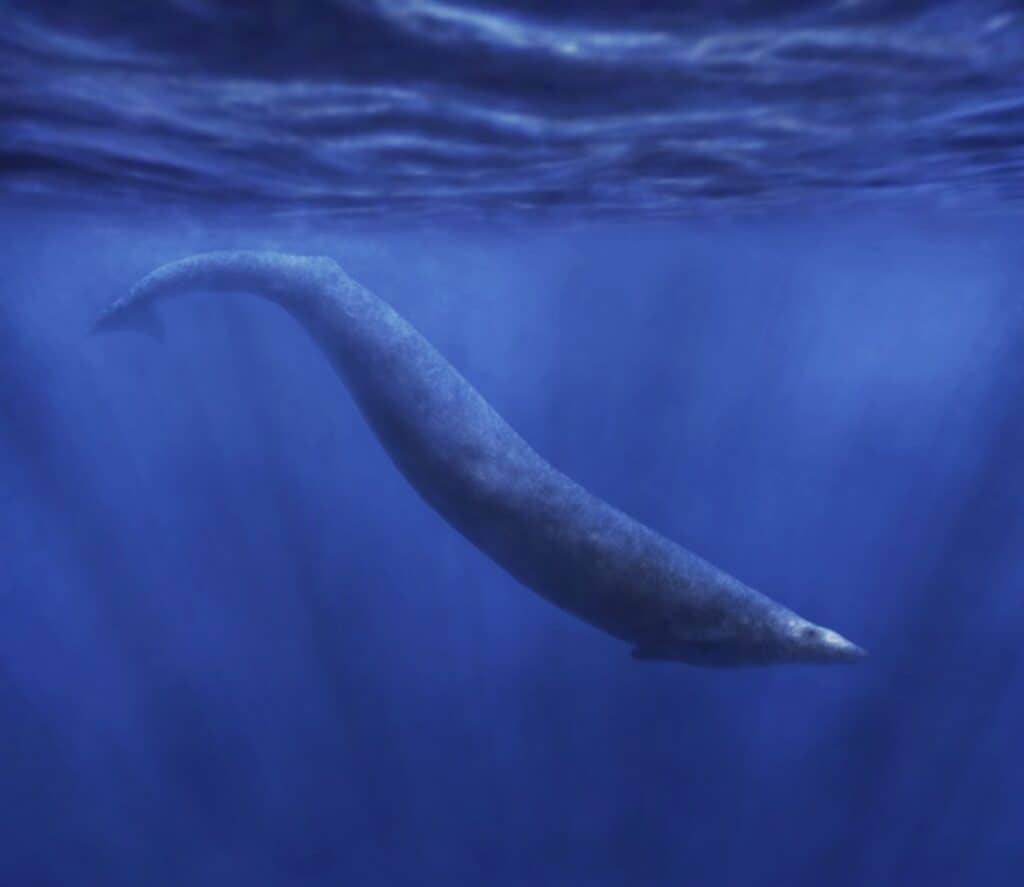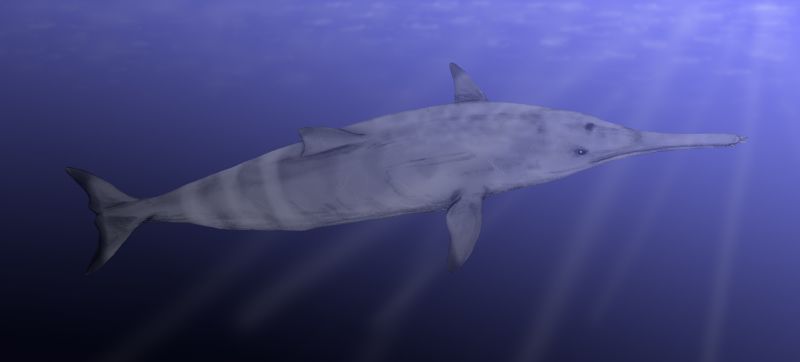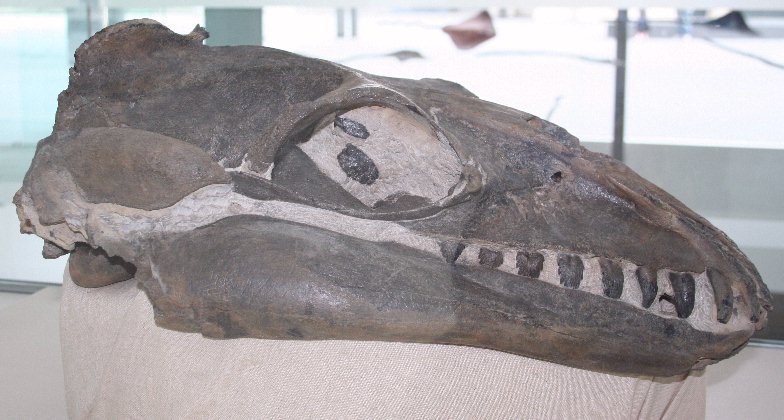Whales have been on the planet for millions of years. They’ve existed for so long that entire families are extinct. What are 5 of the extinct types of whales?
The first whales evolved on the planet about 50 million years ago. Their terrestrial ancestor lived long before that. Modern whales share their terrestrial ancestor with modern hippopotamuses.
These hooved terrestrial ancestors to whales and hippos spent increasingly more time in the water and began to evolve for that environment. The ocean was ripe for the development of new large contenders in the ecosystem, as huge oceanic lizards had been extinct for some time.
Today’s whales belong to the cetacean order, along with dolphins and porpoises. From there, they divide into smaller groupings. Regarding biological relationships, a family is larger than a genus, and a family is made up of at least one genus.
What extinct whale types are there? Let’s look at some of the extinct types of whales.
1. Protocetidae Family

The protecitids had four limbs used to move both on land and in the water.
©Pavel Riha = user Pavel.Riha.CB / CC BY-SA 3.0 – License
This family is believed to show the first evolutionary step toward modern cetaceans. The protecitids had four limbs used to move both on land and in the water. It’s believed they dined in the sea but slept in terrestrial environments.
No one knows if they had fanned tails like modern whales, but they did have strong tails designed for swimming. It’s believed they gave birth on land though their skeletons reflect that bones were adapting to aquatic life.
Some species in this family had detached pelvises which wouldn’t have allowed them to support their weight on land. Others had pelvises that were still attached to their spinal column, which would have restricted their ability to move through the water. Either way, most lived in and around shallow waters.
Rodhocetus Genus
Rodhocetus fossils have been discovered in Pakistan, and they lived around 47 million years ago during the Eocene Epoch. They occupied the ancient Paratethys Sea, which used to connect the Mediterranean with the Indian Ocean.
To live a better aquatic life, the skeleton of Rodhecetus had a flexible spinal column. This also meant that it was less supported while on land and consequently spent a large portion of its time in the ocean.
Rodhecetus is the best-known example of a member of the Protocetidae family. It grew up to 10 feet long and had digits on its forelimbs. Also, it used its feet for swimming, and its tail acted more like a rudder.
The heelbone on the hind leg of this particular protocetid changed scientific thinking. It was previously believed that modern whales had descended from a smaller wolf-like marine animal. The Rodhocetus ankle bone showed that they’re descended from Artiodactyls or hooved mammals.
Maiacetus Genus
A species from this genus was discovered in Pakistan named Maiacetus inuus. It is the only species contained within this genus. It was probably amphibious.
The fossil of this animal contained an almost fully developed fetus that had been set to be delivered head first. Land mammals deliver babies head first, but modern whales deliver their young tails first. This is another important fossil indicator that modern whales evolved from land mammals.
Maiacetus also had a pelvis that would have supported its weight on solid ground. In contrast, its feet were flat and webbed, which isn’t good for terrestrial walking. Its earbones and teeth are a lot like younger basilosaurids.
2. Dorundontidae Family
These ancient whales were known residents of the Tethys Sea about 40 million years ago during the Eocene Epoch. It was around 16 feet in length. While its front limbs were a lot like flippers, it still had a bendable elbow.
Most of the ancient whales on our list don’t have verified diets, but dorudons do. Fossilized fish have been found within the fossilized stomachs of these sea creatures. They may have also eaten oceanic mammals due to their large and strong jaws.
These whales looked similar to their modern ancestors. They had smaller bodies than another extinct group of whales called the basilosaurids, to which they’re closely related.
Also, their teeth were still very mammalian instead of being uniform sizes like with modern whales. Their detached pelvis meant they couldn’t come out of the water, so the dorudons were fully aquatic.
3. Basilosauridae Family

Basilosaurus whales were among the first full-time swimmers in the whale ancestry.
©Dominik Hammelsbruch / CC BY-SA 4.0 – License
Basilosaurus whales were among the first full-time swimmers in the whale ancestry lineup, along with some dorudons. Scientists know this by studying their vertebrae. This type of extinct whale was the most similar in appearance to modern whales.
Their body vertebrae are taller than they are wide, while their tail vertebrae are wider than they are tall. This mirrors the skeletal structure of extant whales and suggests that they were well adapted to swimming. Detached pelvises allowed for strong tail movements.
Basilosaurids have tiny hind legs, which also shows evidence of a terrestrial ancestor. The ankle bones of these token limbs are similar to those of hippos.
4. Squalodontidae Family

Squalodontids had huge teeth that were housed in a narrow and elongated jaw.
©Nobu Tamura / CC BY 3.0 – License
Squalodontids lived everywhere except Antarctica. This specific family went extinct during the middle of the Miocene Epoch.
This type of extinct whale was known as a shark-toothed dolphin. They had huge teeth that were housed in a narrow and elongated jaw. Their closest extant relative is the South Asian river dolphin though they are not closely related.
They were probably capable of echolocation. This is one of the first ancient whale families with individuals who communicated this way.
5. Mammalodontidae Family

Only a few fossilized individuals of the
Mammalodontidaefamily have been found.
©public domain – License
This family of extinct whales lived off of the coast of Australia and New Zealand during the Oligocene. This family is relatively new, and only a few fossilized individuals have been found.
Janjucetus Genus
Janjucetus hunderi is the only species in this genus. It lived about 25 million years ago. It was about 11 feet long with an exceptionally wide mouth.
It’s a predecessor to modern baleen whales and may have had interlocking teeth. It probably fed primarily on large fish.
It didn’t have the baleen of modern whales, but it most likely did some form of filter feeding. Baleen is what allows some modern whales to filter very small organisms out of large quantities of ocean water.
The photo featured at the top of this post is © SciePro/Shutterstock.com
Thank you for reading! Have some feedback for us? Contact the AZ Animals editorial team.






